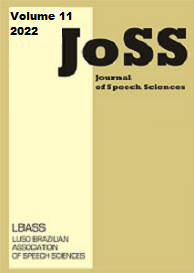Abstract
This contribution is part of the Debate section that dialogues with the two-part paper "The Syntax of Existential Constructions" by Shlomo Izre'el from Tel-Aviv University published in Volume 11 in 2022. In this response and rejoinder to Izre'el's monumental paper on existential constructions in spoken Israeli Hebrew, I call attention to the fact that unlike European languages, Hebrew is a non-subject oriented or non-configurational language type, and highlight that existential particle yeš in Hebrew is a TAM marker. I further enhance on the multifactionality of constructions featuring particle yeš far beyond bare assertion of existence. In addition, I refer to the high productivity of competitive configurations to the bare existential yeš construction based on a range of eventive-situative and locational verbs that are widespread in current use of Hebrew.
References
Benveniste, É. Problèmes de linguistique générale, vol. I. Paris: Gallimard, 1966.
Borschev, V.; Partee, B. Existential Sentences, BE, and the Genitive of Negation in Russian. In: I. Comorovski; K. von Heusinger (eds.), Existence: Semantics and Syntax, Dordrecht: Springer 2007, 147-190.
Bossong, G. Differentielle Objektmarkierung in den neuiranischen Sprachen. Tübingen: Narr. 1985.
Clark, E. Locationals: Existential, Locative, and Possessive Constructions. In: J. H. Greenberg, C A. Ferguson; E. A. Moravcsik (eds.), Universals of Human Language, vol. 4, 85-126. Stanford, CA: Stanford University Press, 1978.
Comrie B. Subjects and Direct Objects in Uralic Languages: A Functional Explanation of Case-Marking Systems. Études Finno-Ougriennes 12, 1977, 5–17.
Creissels, D. Existential Predication in Typological Perspective. A first version of this paper was presented at the 46th Annual Meeting of the Societas Linguistica Europaea (Split, 18-21 September 2013); revised May 2014. http://www.deniscreissels.fr/public/Creissels-Exist.Pred.pdf
Creissels, D. Inverse-Locational Predication in Typological Perspective. Italian Journal of Linguistics 31/2, 2019, 37–106.
Croft, W. Typology and Universals, 2nd edition. Cambridge: Cambridge University Press, 2003.
Foley, W. A. & R. D. Van Valin. Functional Syntax and Universal Grammar. Cambridge: Cambridge University Press, 1984.
Goldenberg G. Semitic Languages: Features, Structures, Relations, Processes. Oxford: Oxford University Press, 2013.
Hale, K. On Non-Configurational Structures. In L. Marácz; P. Muysken (eds.), Configurationality: The Typology of Asymmetries. Providence: Foris, Dordrecht, 1989, 293–300.
Halevy R. Syntax: Modern Hebrew. In: Khan G. (ed.). Encyclopedia of Hebrew Language and Linguistics. Leiden: Brill, 2013, vol. III, 707-722.
Halevy R. Non-Canonical ‘Existential-like’ Constructions in Colloquial Modern Hebrew. In: Ruchot T.; Van Praet, P. (eds.). Atypical Predicate-Argument Relations. (Lingvisticæ Investigationes Supplementa, 33) Amsterdam: Benjamins, 2016, 27–60.
Halevy R. The Existential Construction and Its Type-Shifting Instances in Colloquial Modern Hebrew. In: Bottineau T. (ed.). La Prédication existentielle dans les langues naturelles : valeurs et repérages, structures et modalités. Paris : Presses de l’Inalco, 2020a, 83-103.
Halevy R. Impersonal and Pseudo-Impersonal Constructions. In: Berman R.A (ed.). Usage-Based Studies in Modern Hebrew. Background, Morpho-Lexicon, and Syntax. (Studies in language Companion Series, 210) Amsterdam: Benjamins, 2020b, 539-582.
Halevy, R. What Makes the Dative-Experiencer Construction in Modern Hebrew Different from Its Counterparts in European Languages? STUF- Language Typology and Universals 75/3, 2022, 379-417.
Keenan, E. The Definiteness Effect: Semantics or Pragmatics? Natural Language Semantics 11/2, 2003, 187–216.
Lambrecht, K. When Subjects Behave Like Objects: An Analysis of the Merging of S and O in Sentence Focus Constructions across Languages. Studies in Language 24/3, 2000, 611-682.
McNally, L. Existential Sentences Crosslinguistically: Variations in Form and Meaning. Annual Review of Linguistics 2/1, 2016, 211–231.
Thompson, S. A. Subject and Topic: A New Typology of Language. In: Li, Ch. (ed.). Subject and Topic, New York: Academic Press, 1976, 355–387.
Ziv Y. On the Reanalysis of Grammatical Terms in Hebrew Possessive Constructions. In: Cole P. (ed.), Studies in Modern Hebrew Syntax and Semantics. Amsterdam: North-Holland, 1976.

This work is licensed under a Creative Commons Attribution 4.0 International License.
Copyright (c) 2022 Rivka Halevy


